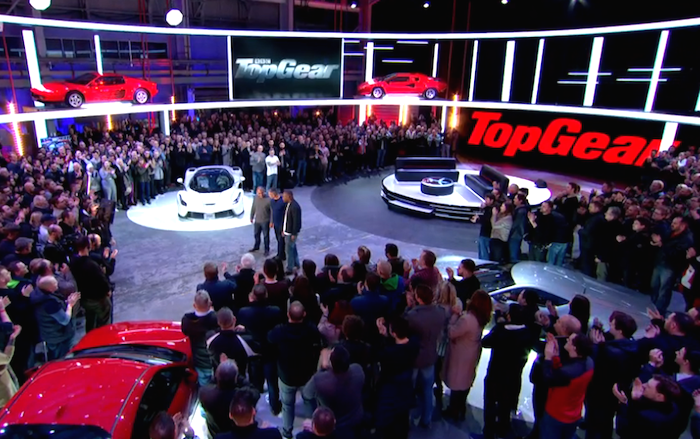
The latest season, which kicks off on BBC America on March 12, has LeBlanc in the driving seat alongside Chris Harris and Rory Reid — both kept on from the last round of Top Gear shows. Fans can expect the usual mix of cool cars, studio-based shenanigans, and overseas jaunts, the first of which feature the trio racing across Kazakhstan in three high-mileage cars: A Mercedes saloon, a Volvo estate, and a London taxi. OK, we never said all the cars are cool.
So how did the British press take to this second outing of the once mighty Top Gear? The Guardian seemed to really want to enjoy it, describing the footage from the Kazakhstan segment as “fabulous,” and LeBlanc as “great, properly funny.” But it said the three presenters appeared to be “trying too hard,” and that the setup was just too similar to the Clarkson-made Top Gear, concluding that the new show “has just too much baggage in its trunk.”
The Telegraph, on the other hand, steers down a more positive street, giving the show four out of five stars. It described Sunday’s night’s production as “a memorable start” that showed “genuine chemistry between the anchors.” It also noted that rival show The Grand Tour spends about the same on one episode as Top Gear does on an entire season, but added, “What LeBlanc and company’s show lacked in Hollywood sheen, it compensated for with grit and good humor.” Finally, it called it “a roaring return — and a vast improvement on last year’s car-crash attempt at reinventing the wheel.”
The Radio Times, however, settled somewhere between the other two media outlets, calling the first episode “so much better” than the previous effort and praising the new-look studio. But while it recognizes the skill of the new presenters, it says that the chemistry between the trio is “not quite there.” However, with only one episode taped, there’s still time for them to click.
Speaking to the Radio Times prior to the first show’s airing, Chris Harris said that this time around, the car is front and center: “Everything we do begins with the automobile … The car is the thing, and then if you apply all of their know-how, all of the skills of the cameramen, the writing skills and then this beautiful filmmaking ability to the car, it’s wonderful. Excuse the pun — the car is the perfect vehicle for making films.”
After the original Top Gear trio departed the show — OK, Clarkson was actually fired – in a blaze of controversy in 2015, the BBC decided to retain its most lucrative TV offering by hiring a new team and giving the format an overhaul.
BBC TV and radio personality Chris Evans headed the show, with actor Matt LeBlanc also signed up to present. But as the ratings nosedived, news reports began to surface of tensions between the two anchors, with Evans eventually calling it quits.
But Top Gear is back. Again. And hopefully this time around it’ll deliver like it did in the old days. The new show airs on BBC America at 8 p.m. ET on Sunday, March 12. Watch it for yourself and let us know what you think in the comments below.


